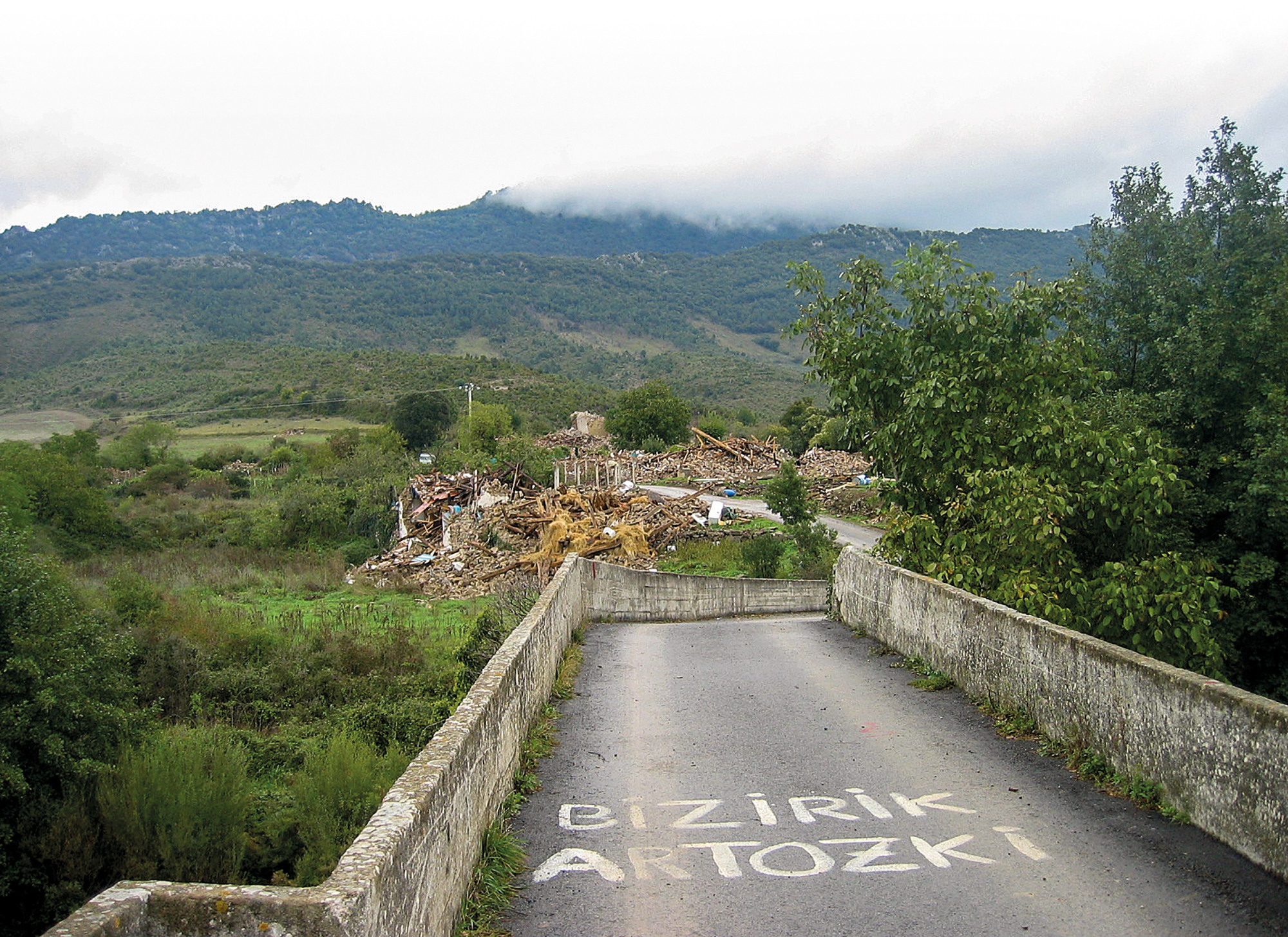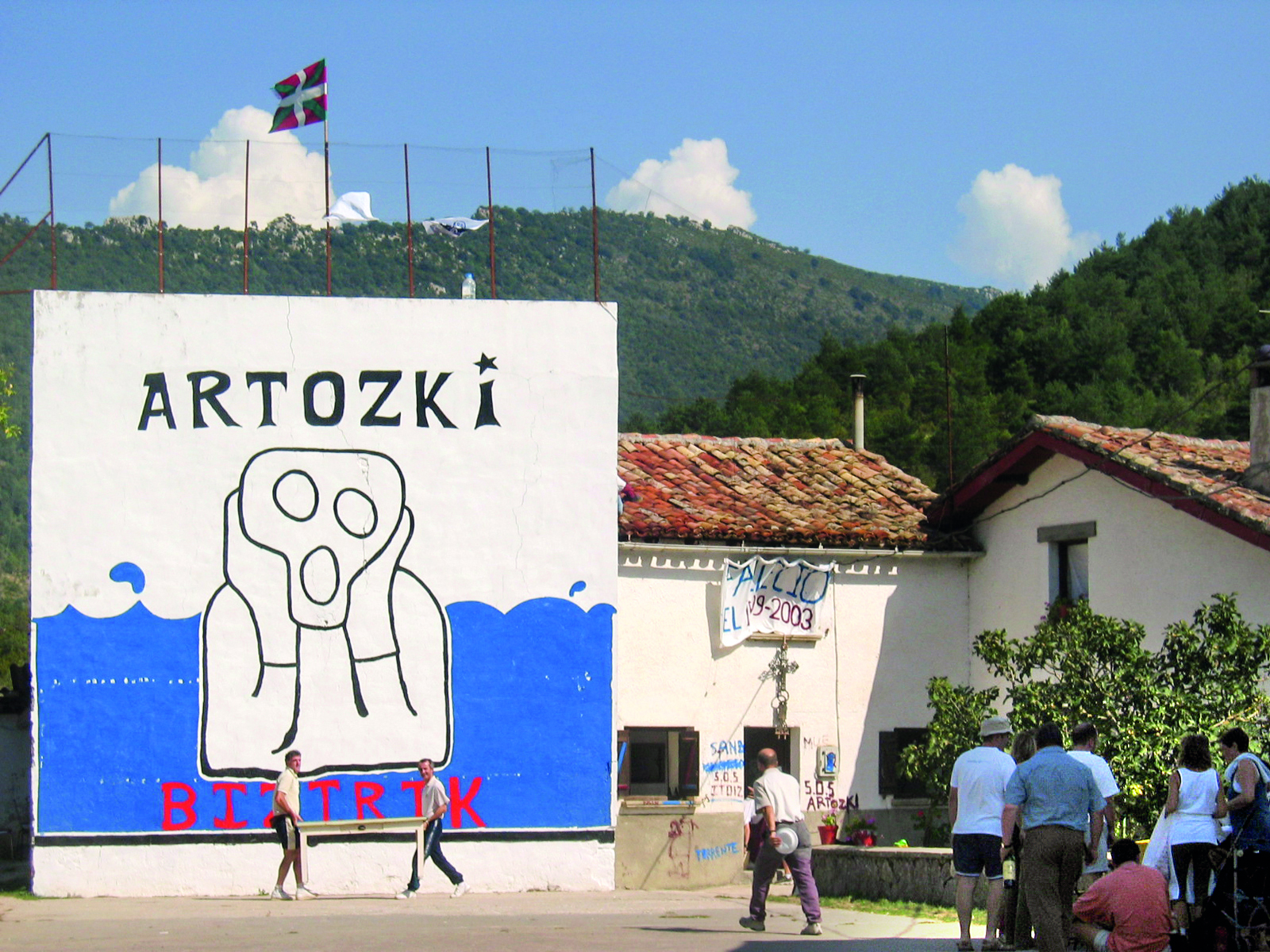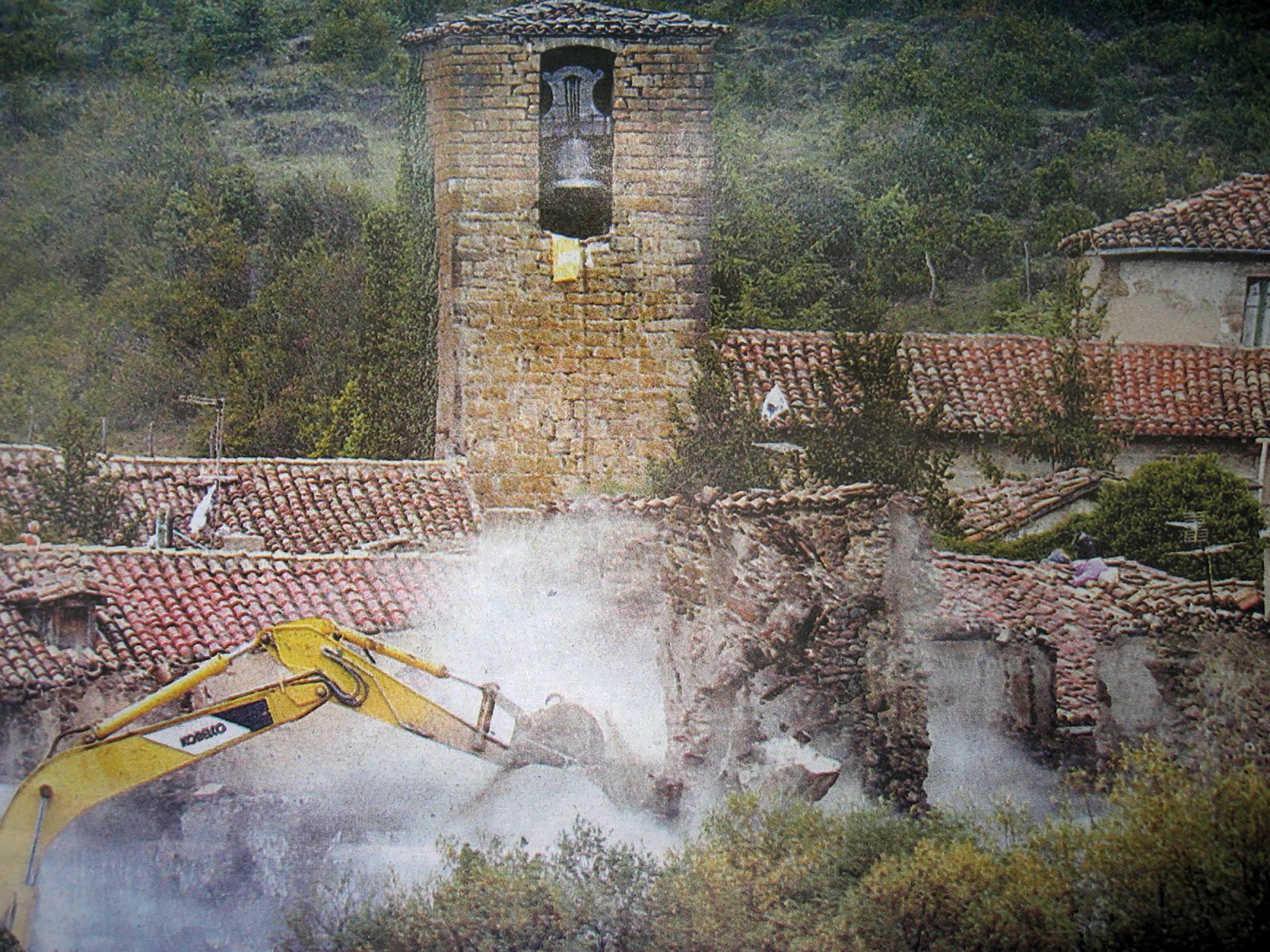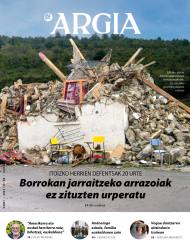Resistance of underprivileged peoples turns 20
- Twenty years have passed since seven villages were torn down and drowned underwater to build the Itoiz reservoir. However, the citizens and those who were not citizens simply did not accept the emptying of the peoples, and made a harsh defence of the inhabited places. The resistance was organized and carried out by the members of Solidarity with Itoiz.

The fight against the Itoiz reservoir became at the end of the twentieth century and the beginning of XXI.aren a symbol of land and the environment. His name comes from one of the underwater villages. In fact, seven villages in the area were demolished and submerged to build the reservoir. Along with Itoiz, the villages of Orbaitz, Ezkai, Muniain, Gorritz, Artzi, much of Nagore and Artozki were submerged.
It is currently the largest reservoir in Navarre, located in the vegas of Artze and Lónguida, and has its main dam on the river Irati.El project
was reported in 1985 and opinions against it soon emerged. That same year, the Itoiz Coordinator was set up in order not to build the reservoir.
The works of the Itoiz reservoir began in 1993 and the dam had been executed by 2003. It is the year in which the eviction of the localities mentioned begins. However, the population did not give way to excavators. They strongly defended accommodation, especially Itoiz and Artoz. On the first came the machines on 16 June, together with the Foral Police and the Civil Guard. Dozens of people resisted and took three days to expel everyone and demolish buildings.
“The response of society was strong, people were very conscious at the time”
They appeared a day before what was communicated to evict the village, but the operation did not surprise the neighbors, the machines and the police that were in place to arrive. Nagore's previous emptying helped predict what Itoiz would be like. In addition, the Civil Guard had already been circling in the village and “realized it was going to be soon,” says citizen Dani Unziti.
They knew that the people were going to be destroyed and some of the heritage they had brought out earlier, such as church saints or the remains of relatives in cemeteries. “However, our main goal was not to get things out of the people, but to try to make our expulsion as difficult as possible.” The next day there were more people coming to Itoiz, but the people there were willing, each in their resistance zone.
Unziti spent the three days of resistance hiding in his house. “We have a hard time.” He was the only strangled group of Elkartasuna with Itoiz and spent a lot of time preparing his resistance: making the purchase, carrying the cement, bringing people who resisted in the car... “We were working from within the home so we didn’t realize what we were doing.”
In defense of Artozki, for two weeks
On 15 September, the resistance moved to Artozko and its defence lasted for two weeks until it was violently evacuated by the Foral Police and the Civil Guard.
The Government of Navarra stated that Artozko's neighbours voluntarily left their homes. It didn't. It is true that with the Government of Navarra they agreed on 15 September to leave the houses, because that was the only way to buy the land of Nago and Azparren afterwards. To deny the government's version, neighbors signed a statement: “None of the six families we lived in Arthoz has reached an agreement with the Government of Navarra. All property of families has been violently expropriated.”
.jpg)
Although the families had to leave the houses, the witness they gave to the supporters. The entrepreneurs entered the homes two days before the order of the scare, in which families and solidarity lived.
Julio Villanueva was part of the Elkartasuna group with Itoiz at that time, but was not present in the days of eviction of the peoples. In fact, in 1996, I was under the search and capture orders for cutting the reservoir cables along with seven other members. This action interrupted construction for ten months. Although he was not in the villages during the days of resistance, he dedicated himself to preparation. “We think of a strategy for the resistance of peoples.”
Monthly preparations
Solidarity workers spent months preparing them, starting at the end of 2002. They prepared Artozko's first, although Itoiz was emptied earlier. To introduce the pipes and be able to chain them, closures were made on walls and windows, bunkers were prepared...
Villanueva says they took the download “to the end”. “It was very dangerous for entrepreneurs: they started throwing the wall violently and throwing stones on them.”
Intermediaries were appointed to carry out the communication between the police and the resisters: “Mediators told them there were hidden people, but the police didn’t listen. They were telling the workers to come in and crush everything. The hidden ones had to leave their hiding places, which were in grave danger.” Mediators were also beaten on several occasions, according to Villanueva.
“The government didn’t care if there were any deaths,” says Unai. From his burrow, he heard conversations between firefighters and cops. “The police wanted to finish the emptying one day. The firefighters told them it was impossible because they would need at least two days to rescue the people.” However, the police were in charge of breaking down the first houses and taking the people out afterwards, but the firefighters planted and told them: “So do you. We are not going to do that.” Firefighters are grateful for the presence of the drowned.
From "emptying" to "rescue"
The police also changed the status of their intervention: what was initially a “emptying” of the peoples, they called it “rescue”. Villanueva explained that “people rescued in a rescue can die, so if someone is seriously injured or killed they could give that reason. That’s how they were protected.” The firefighters also came closer because it was a “rescue.”

The theme of Itoiz, besides in the Basque Country, was internationally recognized. The actions of the Itoiz Coordinator and the Elkartasuna Group with Itoiz had a great impact, for example, the cables were cut and electricity cut, the roads were cut and two female entrepreneurs damaged 54 machines. Two solidarity groups have stressed the solidarity of the people. “The response of society was strong, people were very conscious at the time.”
Asking Unziti if after shredding his village and house the authorities offered them something, he replied: “Offer? What they have always offered us is repression and selling us without any rights.” Villanueva says the repression was “brute”. At one point eleven people were in danger of being imprisoned for acts against the dam. Four people went to jail. “An important part of Itoiz’s collective of solidarity was repealed, we could not participate in the acts being carried out in public, because the arrest warrant was in force. However, although silently, some of us continue to fight.”
It is clear that the dam project was not carried out to benefit the inhabitants of neighbouring villages. What for? “The money hungry construction was made for the benefit of companies and the corrupt political class left them by hand,” says Villanueva. “They first built the reservoir and then invented what to use it for.” The project was part of the plan of the Hydrological Plan, initially in force in Spain, which intended to bring water to the Mediterranean. However, this plan was suspended. “They realized they had a huge reservoir and they didn’t know where to steer their waters. Then the Navarre canal was invented, which is part of the Itoiz reservoir.”

Commemorative programme
On the occasion of the 20th anniversary of the resistance of the peoples of Itoiz and Artozki, several of the members of the people ' s defence have met again for the month of October. In the Pamplona Station, the exhibition Artozki Artezki has opened: Itoiz's supporters recover missing works at Arthoz for 20 years.
These initiatives aim to combine the “struggle and memory”, according to Villanueva: “It will not be a nostalgic celebration, but an appeal to struggle. We have to organize and fight harder than ever for the earth.”
Programme
From 2 to 18 October exhibition "Artozki
Artezki" in the Station of Pamplona
10 October, round table
at the Station
From 20 October exhibition
"Artozki Artezki" in Aoiz
October 21 "Earth
Defense Day" in Aoiz: event, popular food and concerts
[This report is completed with the article Umbilical Gold Cord on the Canal of Navarra published in the same weekly]
I do not know if the exhibition of the multidisciplinary art project Hamaika will reach your people.
Along with the works, eleven testimonies. There is everything in it: fear, pain, anger, hope, disappointment, strength... testimonies written with affection. People who live in... [+]
Although immersed in an unprecedented eco-social crisis, the administration continues at all costs with the work of the TAV, destroying the territory and squandering the resources essential to social needs. The works of the Castejón Bridge and the Tafalla Campanas subsection,... [+]
Next Saturday, May 11, AHT Gelditu! Navarra organizes in Pamplona the Day against the TAV. In addition, Eco-Socialist Spaces, the World March of Women and the Charter of Social Rights have called a demonstration under the motto For a Dignified Life, A Just Eco-Social... [+]












